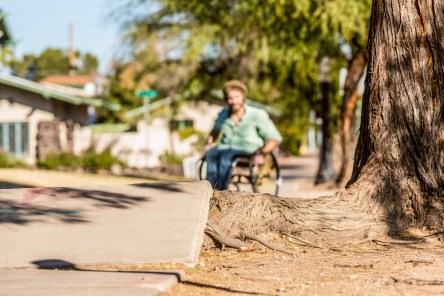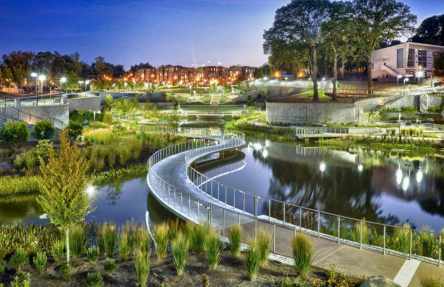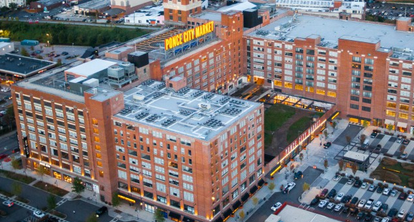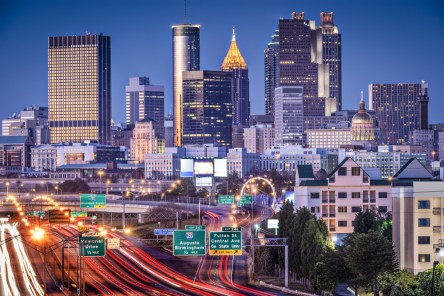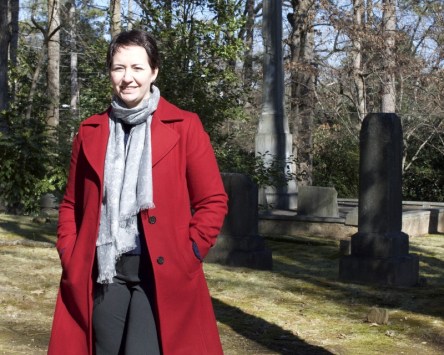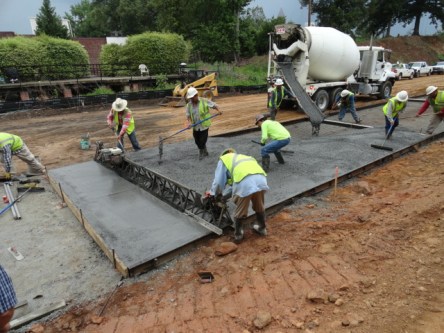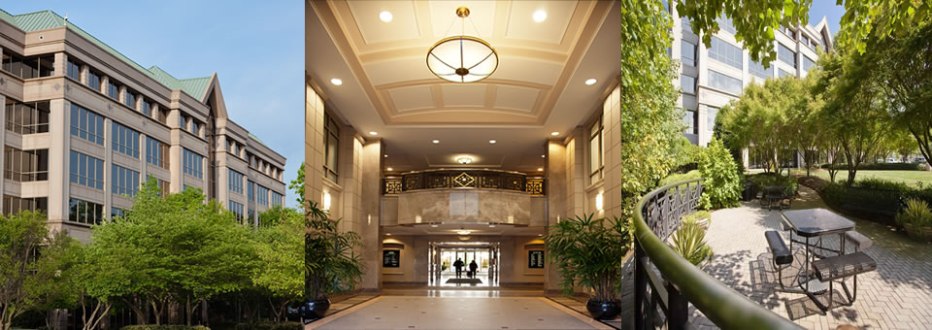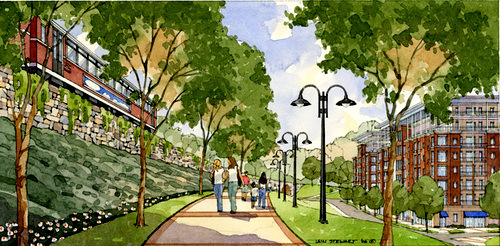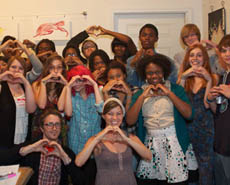Imagine that you’ve enjoyed your home for decades: your kids’ growth charts are on a doorframe in the kitchen, you know your neighbors, and your favorite restaurants all know you by name and order. The neighborhood isn’t what it used to be, but it’s your home. Within a matter of years, a wave of new investments transforms your neighborhood. The cost of living increases and property taxes soar. You can no longer afford the home that you’ve nearly paid off, and you face eviction. That is the reality for many long-term residents of metro Atlanta neighborhoods. Neighborhood ascent, or gentrification, is the process of renovating communities that have experienced disinvestment. Through the process, crime rates drop, property values increase, infrastructure and services often improve. Gentrification, however, comes with grave disadvantages for existing residents including higher rents, higher property taxes, exclusion and discrimination. Yardi client H.J. Russell & Co. is an Atlanta-based firm that conducts construction, program management, and property management. It is aligned with sister real estate development firm Russell New Urban Development L.L.C. Together, they fight gentrification and nurture diverse neighborhoods through strategic projects and partnerships. Atlanta gentrification: an ongoing battle for “home” Atlanta is one of the nation’s largest cities for African Americans with 51.85% of the population identifying as Black or African American. It is also among the top 5 fastest gentrifying cities in the U.S. Several benefits come when investors support a brighter vision for a community. Unfortunately, that vision rarely implements practices that reduce out-migration and encourage long-term affordability. Longstanding residents are often excluded from the vision and priced-out of their homes. Neighborhood ascent does not necessitate segregation or displacement. With strategic planning and real estate firms such as H.J. Russell, neighborhoods can benefit from investment without ousting existing...
ADA in Multifamily
Cost of Non-Compliance
I’ve been a proud Atlanta resident for 24 years. While much of that time was spent in the car-dependent suburbs, recent years have offered the opportunity to explore the bustling city as a pedestrian. It was during a trip to Piedmont Park (the largest park within Atlanta city limits) that I noticed a problem that has plagued city dwellers for decades: precarious pavement. Cracked concrete slabs jut several inches into the air, forced upward by the roots of established trees and erosion. Those raised surfaces were accompanied by deep potholes and portions of missing concrete. It was an unpleasant ride on my mountain bike. I could only imagine what it must be like on foot or in a wheelchair. Others have had similar thoughts. On June 11, three wheelchair users filed a class action lawsuit against the city of Atlanta. The suit asserts that the city’s walkway infrastructure does not uphold the Americans with Disabilities Act (ADA) statutes. The hazardous walkways make navigating pedestrian thoroughfares dangerous. In many areas, pedestrians must enter the street and contend with automobile traffic just to get around. A win seems promising for the wheelchair users. Several major cities have emerged from similar lawsuits by paying billions for repairs. Los Angeles, for example, settled a suit in 2015 for $1.3 billion in repairs over the span of 30 years. Avoid Lawsuits. Be Proactive About ADA Compliance. If major cities are not exempt from ADA noncompliance lawsuits, neither are you. Residents are demanding their rights at multifamily properties, too. In 2012, The Department of Justice announced one of the largest settlements to date: the owner of 32 properties had to pay $10,250,000 into an accessibility fund to correct noncompliance issues. The owners also paid a $250,000 civic penalty. Correcting the...
Atlanta’s Auto Boom...
Real Estate Growth Abounds
Within the past 5 years, metro Atlanta has welcomed multiple international automotive companies. The rise of the automotive industry results in additional commercial development for the growing region. PSA Group PSA Group, parent company of Citroen and Peugeot, is the newest arrival to Atlanta. Automotive News reports that the French automaker is already recruiting in the with hopes of opening its American headquarters in February. For a company that is opening its doors next month, PSA Group has been silent about the details of the site. It is safe to say that the headquarters will not be new construction, though details of the deal in one of DeKalb County’s existing high-rise have not been forthcoming. PSA Group products will not be available until 2026. The company is currently in its development stages, focusing primarily on US compliance standards and market research. Analysts are anxious to see if the arrival of PSA Group will stimulate growth seen near other automotive developments. Mercedes-Benz The 200,000-square-foot Mercedez-Benz headquarters, on the other hand, is hard to miss. Groundbreaking took place in 2016 and the building is scheduled for occupation in March. Roughly 1,000 employees from the temporary headquarters in nearby Dunwoody will relocate to the new 12-acre site in the spring. The aesthetic of the $93 million building, located in the suburb of Sandy Springs, champions simplicity: clean lines, a muted color palette, and bright spaces. The structure, mostly glass, was inspired by biophilic design. “No person sitting in this building will be more than 30 feet from daylight,” says Gensler Principal Stephen Swicegood of MBUSA. The headquarters will be equipped with a fitness center, and a day care center with extensive outdoor playground. Adults can play in the walking trail nestled amongst nearly 800 trees. “We’re very pleased...
BeltLine Update
Push for Affordable Housing
Atlanta City Councilman Andre Dickens proposes a revised zoning ordinance along the Atlanta BeltLine, a 22-mile mixed-use park project. It is the first step in a longstanding effort to prepare for the city’s 40 percent population boom by 2040. The proposal would require developers along the BeltLine to designate a percentage of units towards affordable housing for the next 20 years. Developers would receive incentives for their compliance, such as reduced property taxes and more flexible parking requirements. Additional details remain undisclosed. The push for affordable housing in Metro Atlanta, particularly in the Buckhead segment of the BeltLine, addresses a desperate need. Buckhead View reports the most recent data: A person or family whose income falls below 80 percent of the Atlanta Metropolitan Statistical Area Median Income (AMI) qualifies for subsidized housing. The median income for a family of four is approximately $67,500. Per the United States National Housing Act of 1937 for affordable housing, allotting one-third of one’s income is reasonable for housing costs. That would be $24,300 a year or an average rent of $680 per month for Atlanta families. Along the BeltLine in Buckhead, an 800 square-foot studio could cost a family more than $1,840 per month. Rents exceed $2.30 per square foot, according to Haddow & Co. Home prices continue to rise. A report issued by Georgia Tech reveals that home sales prices near the BeltLine increased faster than elsewhere in Metro Atlanta. Prices skyrocketed between 40 to 68 percent in the last four years, depending on the neighborhood. High prices are largely the results of land costs. Chuck Young, SVP of development for the Prestwick Development Co., notes the steady rise in recent years. “It used to be we could develop a garden apartment for $65 a square foot. Now it’s...
RFD Social
Ponce City Market Tower
An eye-catching yet awkward space may soon become Atlanta’s hottest new bar and lounge. The site of Ponce City Market was once home to Sears, Roebuck & Co. headquarters. When it opened in 1926, newspapers heralded the 2.1 million square-foot building as the largest brick structure in the southeastern United States for decades. It remained in operation until 1987. In 2012, the site reopened as a mixed-use hot spot for Atlanta locals and tourists alike. Nearly 85 businesses call Ponce City Market home. Restaurants, clothiers, bars, and artisanal shops share a space the buzzes with energy and young, hip shoppers. Though Ponce City Market has enjoyed success, its iconic tower remained desolate. Shops and restaurants occupied lower levels of the structure but the unique vision for floors 10, 10.5, 11, and 12 lingered unfulfilled. What Now Atlanta reports that operator Slater Hospitality has finally found a suitable use for the challenging 16,172 square-foot space. Plans for RFD Social are in the works. Rumor has it that RFD Social is short for Dinner Bell Radio Farmers’ Democracy, a radio show that once broadcast from the Atlanta Sears Tower in the 1920s. Kevin Slater, owner at Slater Hospitality, has not confirmed or denied this claim. RFD Social will include a multi-level bar and lounge, as well as an events space with a catering kitchen. Adjoining businesses include Skyline Park, Nine Mile Station restaurant, and Rooftop Terrace events space. While locals are excited to see the space put to good use, a few questions remain unanswered since the press release issued in late August. “I want to know if it will be a public space or if it will only be for private events,” said Kimmey Elliot, 26, an Old Fourth Ward resident. “We don’t need another...
Breaking Records
Atlanta Offices 2016
It’s the perfect combination: a boost in local jobs, diminishing office supply, and rising rents. The three have positioned the Atlanta office market for a record-breaking year. With a conservative lens, JLL lists the Atlanta office space vacancy rating at 17.5 percent and average rents of $22.54 per square foot. Transwestern confidently states a 15.9 percent vacancy rate and average rates closer to $25. In both scenarios, this quarter marks one of the highest asking rents in nearly 30 years. There is still room to grow. Conditions suggest that asking rents could approach $30 per square foot: PM Realty Group estimates that Atlanta broke its 2000 occupancy gain record. The market totaled almost 3.7 million square feet of office space absorption for 2015. The resulting 14.2 percent vacancy rate for Class A properties broke a 15-year low, according to Transwestern. Atlanta’s Class A direct occupancy rates broke a 14-year record, increasing by 300 basis points to 86.7% over the prior 12 months. Class B office space accounted for 29.7% of the total net absorption for 2015. Just three years ago, Class B office product saw negative absorption in Atlanta. Demand for quality office space in Atlanta continues to grow. BisNow reports that Metro Atlanta is expected to add 60,000 jobs per year for the next few years. Nearly 25 percent will be “premium” jobs that require office space—yet only 885,000 square feet of office space is under construction for the year. If 885,000 square feet doesn’t sound like a game-changing amount of space to you, you’re not alone. It’s barely a drop in the preverbal bucket. With the exception of residential, many investors still see real estate as a risky investment. Funding for new construction remains scarce, which means that existing Class A properties...
All-Fiber Home Run
Braves, Comcast Make a Play
The Atlanta Braves and Comcast have entered into a landmark multi-year technology and real estate partnership that will call for multi-terabit network capabilities to SunTrust Park and the surrounding community, creating the most technologically advanced mixed-use development in the U.S. Under the terms of the deal, Comcast will provide video, voice and high-speed Internet connectivity throughout the 60-acre development, which includes the new ballpark, retail shops, restaurants, an office tower, hotel, an entertainment venue and residential units. Comcast will become the signature tenant in the office project. “From the outset, we said the Braves would set a new standard of excellence in every aspect of this project, and building the most technologically advanced ballpark in history and redefining fan connectivity is key to accomplishing that,” Terry McGuirk, Atlanta Braves chairman, said during a live news feed. “Our partnership with Comcast will keep us head-and-shoulders above other sports venues and mixed-use communities around the country and allow us to meet our fans’ high expectations for engagement, awareness and access. Shoppers, hotel guests and office tenants will also enjoy an experience unlike any other community.” The development’s all-fiber network will be capable of delivering multi-gigabit speeds throughout the complex on game days and every day in between. The Atlanta Business Chronicle reported last month that Braves ownership Liberty Media is spending $452 million to develop their new mixed-use project adjacent to SunTrust Park, putting the total cost of the ballpark and mixed-use project at $1.1 billion. Located at the intersection of I-75 and I-285 in the bustling Cumberland CID, SunTrust Park will flow directly into the surrounding development, creating a vibrant atmosphere with unique shops, restaurants, offices, residences and entertainment venues that are accessible 365 days a year. The new nine-story office tower will house more than 1,000...
Bettering Buckhead
A community in transformation
It’s never too late to improve livability. Buckhead, an affluent and well-developed Atlanta submarket, demonstrates that notable change can be made even in established areas. Green space and cultural engagement are key to the transitioning community’s success. Markets experiencing the strongest, most sustainable growth these days are those where residents can work, live, and play in pedestrian-friendly communities. Ownership of a single-family home, an automobile, and long commutes from the suburbs don’t rank high on Millennials’ lists. Instead, they trend towards pedestrian neighborhoods with alternative transportation, active street scenes, and an emphasis on environmental stewardship. Buckhead fell woefully short in many of these areas. The submarket gained a reputation throughout metro Atlanta for its sprawling estates and commercial success but it was decidedly unapproachable and in many potential residents’ eyes, unlivable. Without major changes, Buckhead would sabotage its own growth and vitality. One spark initiated the necessary changes. In 2011, Denise Starling received a daunting task. The Executive Director at Livable Buckhead found herself facing a green space deficit and a demand for change. “Howard Shook is our councilman and he came to us and said ‘City of Atlanta just did this plan that identified my district as the lowest parked in the entire city of Atlanta. That can’t be. Go fix it!’ He literally said, ‘Go fix it!’” Starling laughs. “We’re like…alright. So that’s basically how we started a green space plan.” The councilman was right. At the time, the Community Improvement District, Buckhead’s commercial center, had only 2.14 acres of green space per thousand people. The standard is 15 acres. Establishing parks became the organization’s primary objective. Walkability was also a sought-after feature that Buckhead lacked. At the time, WalkScore dubbed the area as “car dependent,” entailing that most residents had to...
Atlanta BeltLine
Early Completion Expected
The Atlanta BeltLine’s Westside Trail is slated to finish two to three years earlier than expected, even with a few delays due to a rainy summer this year. The good news comes after the project received a recent wave of grants. The US Department of Transportation awarded an $18 million grant in early September. Called Tiger V, the grant will supply about 42 percent of the project’s total cost. This is a huge step for the BeltLine. With the funds, an additional 2.5 mile portion of the trail’s southwest corridor will be completed. To access the trail, residents and guests will gain access to 16 ADA accessible entry points as well as pedestrian overpasses at nine crossroads. Upon receiving the grant, Mayor Kassim Reed lauded the project as “one of the most transformative projects ever undertaken in our city’s history.” He continued, “This $18 million grant is a tremendous step forward in my administration’s goal to make the vision of the Atlanta BeltLine a reality much sooner.” Paul Morris, President and CEO of Atlanta BeltLine, Inc., expressed his gratitude for the award. “We are extremely grateful to the U.S. DOT for this opportunity to deliver such a significant part of the Atlanta BeltLine in southwest Atlanta years ahead of schedule,” said Morris. In mid-September, the BeltLine received a $20,000 grant from REI, which is double the outdoor supplier’s contribution last year. The funds will be allocated towards new mile markers and signage along an 8.2 portion of the trail. Funds will also be set aside for ongoing management operations. To keep the extensive trail network safe and enjoyable for everyone, the BeltLine has received its own security force. The Path Force formed this July after receiving a $1.8 million grant from the U.S. Department of...
Yardi Atlanta’s New Green Home
Mansell Overlook is LEED Gold Certified
Mansell Overlook, the new location for Yardi’s Atlanta offices, received LEED Gold for Existing Buildings Operations and Maintenance. The Yardi teams have been in their new green home for two months now, adjusting to the office space, getting to know new coworkers, and generally letting the dust settle. Mansell Overlook was built in 1996, before the modern green movement really took off in the southeast’s commercial sector. When owners considered a green renovation over a decade later, they faced challenges common to retrofits. With tireless dedication, the team exceeded expectations. “We earned LEED Gold when others said we could only get Silver for that LEED budget and schedule,” reports Amanda Madrid, LEED Green Associate and General Manager at Jones Lang LaSalle Americas, Inc. In addition to the complex’s Gold certification, the project team included programs for green landscaping, integrated pest management, green cleaning, green TI’s and cooling tower chemical management. Miraculously, the project was completed under budget. Building 500, which holds Yardi’s offices, received an 95/100 Energy Star Score. The site saves 32 percent in water expenses thanks to high-efficiency restroom fixtures. The site also avoids the waste of products used within the office. 65 percent of ongoing consumables (plastic, paper, glass, etc.) are diverted from landfills through the site’s single-stream recycling. 100 percent of office waste, such as furniture and electronics, can also be diverted. Yardi employees reap the benefits of low mercury lighting and improved indoor air quality. Onsite walking trails and gardens provide a beautiful place to relax and unwind during breaks. After hours, Yardi staff can head down to the gym for an invigorating workout before heading home. “We really tried to make the workplace comfortable and enjoyable for our tenants,” says Madrid. The green features did not require Yardi to skimp on space. The additional square footage provides Yardi team members with “breakout rooms,” small meeting areas that are great for impromptu meetings. For larger gatherings, team members drew upon local sports teams to identify their conference rooms. The Falcons, Braves, and Hawks all have designated conference rooms. The largest meetings are held in The Dome, the namesake of Atlanta’s professional football stadium. The new space will also accommodate our growing family. As Yardi’s HOUSINGCafe product takes off, the new support staff will likely join their peers at Mansell Overlook. Employees may take advantage of access to public transit, which is a huge deal in Atlanta where the average commute exceeds an hour each day. Public transit shortens commute times, not to mention that the time could be spent reading, FaceTiming with friends, or anything other than staring at the bumper in front of you. Those who opt to use personal vehicles can take advantage of the property’s six electric vehicle charging stations. Mansell Overlook aims to improve the tenant experience for years to come. “Vendors and tenants participated in the initial certification,” says Madrid. “We will continue to follow best green practices with education and support from property management as well as through tenant satisfaction surveys.” Word on the Street Learn Yardi employees’ favorite features of the new building: “I like the people. It’s a really good group. The security guard is always so friendly and helpful. The facility is beautiful and really well done. The grounds are rather park-like here. It’s not just an office building that you pull up to. There is availability to do a lot of things, like the trails and our public spaces.” —Atlanta Office Administrative Assistant “I like the upgraded office space, the layout of the floor plan, and the combination of our two locations.”– Chastity Cook, HR Generalist/Operator Coordinator “Yardi is a great place to work and this is a great environment. I’ve done the walking trails a few times. I’ve been to the fitness center but I haven’t joined yet! Overall it’s just a nice atmosphere.” —Karen Francis, Utility Auditor My favorite features? Yardi uses...
Atlanta’s BeltLine
Improving quality of life
In the quest for a healthier, more transit-friendly Atlanta, a growing grassroots movement is backing the BeltLine plan. The Atlanta BeltLine, which includes 1,300 acres of parks, 33 miles of multi-use trails, 22 miles of rail transit, and 5,600 units of affordable housing, has grown from a seedling in the mind of a Georgia Tech student into a full-fledged redevelopment movement supported by civil leaders, residents, and national environmental organizations. Repurposed historic railway corridors and remediated brownfield make up the backbone of the BeltLine, accompanied by the addition of new parks and trails that unite various parts of the city into one, easily accessible whole. The BeltLine has caught the attention of multiple media outlets, and recently earned praise from The Sierra Club’s Smart Choices, Less Traffic report, where it was heralded as one of the nation’s finest examples of eco-conscious transportation initiatives. “If they pull it off, and I think they will, it will be a model, and pull them out of the economic doldrums they are in,” said Chris Leinberger, a leading scholar and expert on walkable urbanism. “The BeltLine is going to save the city of Atlanta and become a major economic generator for the entire region.” Most civic support has been poured into the transit lines. The BeltLine holds the ability to make the neighborhoods of Atlanta more accessible and united. A poorly developed public transit system and mind-numbing traffic (Atlanta tops Forbes’ “Worst Cities for Commuters List”) currently locks residents within their neighborhoods and suburbs. To ease transportation woes, the BeltLine will connect 45 neighborhoods via rapid rail transit, merging with existing MARTA systems to extend access to the city’s suburbs. As each segment of the BeltLine reaches completion, more residents can enjoy abbreviated commute times. Improved public transit will also reduce Georgian’s dependency on personal motorized vehicles and the carbon footprint that they leave behind. While the transit line holds the greatest appeal for most Atlantans, it is also the source of the most contention. BeltLine progress has been vastly determined by referendums, the most recent of which failed to gain sufficient support. TSPLOST, which would have added a 1 percent sales tax to raise funds for portions of the project, was declined. Impeded but not deterred, leadership plows forward with the plan. Small victories, such as the recent Old Fourth Ward land acquisition, have kept the BeltLine vision alive. Earlier this year, Atlanta BeltLine Inc. purchased .76 acres of land from The Trust for Public Land. Though insubstantial in size, the space will make a huge impact on the BeltLine’s cohesion. The property will connect the new Eastside Trail with Historic Fourth Ward Park, allowing pedestrians a clear connection to Piedmont Park, Freedom Park Trail, and Jimmy Carter Presidential Library complex. Construction is slated for completion in 2014. Overtime, the Historic Old Fourth Ward property will connect with six existing parks. Researchers have realized that no single type of green space completes a snapshot of a healthier Atlanta, which is a secondary BeltLine goal. Walkability requires a combination of parks, urban gardens, playgrounds, woodlands, alternative transit routes and community plazas to develop an urban culture that is environmentally responsible and promotes residents’ physical and mental health. This spring, Atlanta BeltLine is collaborating with the City of Atlanta to replace the Edgewood Avenue bridge. Pedestrian walkways will be added to the new structure. By April 2014, the new Edgewood Avenue bridge will connect the Eastside Trail to Lake Avenue, DeKalb Avenue, and Irwin Street. This small link in the chain proves to be as important as any other, improving pedestrian access to multiple neighborhoods and their resources. To connect the various parks and residential corridors, a 33-mile network of multi-use trails is in the works. Fortunately for project planners, 22 miles of the trails were previously used for the railroad, thus offering relatively clear and maintained grounds upon which to build. Other portions...
Lofts at Perimeter Center...
Behind the Lens
The evening of the photo shoot could not have been more perfect if it were Photoshopped: bright blue skies, golden sun, and a crisp breeze signaled the official arrival of autumn in southeast. The photography team easily made our way to The Lofts at Perimeter Center, a Worthing Company property conveniently located at the junction between I-285 and GA 400. The Lofts rest just moments from the buzzing shopping malls and fine dining of one of Atlanta’s hottest extensions. Tucked away in a green residential enclave, the community balances a hip, urban vibe with natural beauty. Lush, vibrant landscaping complements the community’s sleek contemporary architecture. It looked like it would be a fun place to call home, a little oasis in the bustle of the city. Inside, the clubhouse hopped with residents. A group jogged together on the treadmills in the upstairs gym. Two young ladies worked at the computer stations near the community lounge. Unlike many clubhouses that prove to be a selling point more than an actual place to congregate, The Lofts residents take advantage of the amenities and social atmosphere. It’s no surprise, really. The upscale décor of the clubhouse transforms the space into a lounge that’s perfect for gathering with friends. Upbeat music and friendly staff added to the relaxed, club-style atmosphere. Yardi Systems photographer Nicole Goodness-Landfried and I were soon greeted by Leigh Scofield and Judy Allen, Worthing Company property managers. Both ensured that we had everything we needed to get started. They also accommodated our models, residents of The Lofts, who were excited to get started—dolled up and glamorous with bright smiles to boot—but they were a bit camera shy. “Anyone up for some wine?” Judy asked. There were a few sheepish smiles before the unanimous “yes!” from...
Saving the Cities
The rewards of revitalization
Philadelphia, Detroit, Cleveland, Atlanta—these major U.S. cities top data lists as the slowest to recover from the recession. Their areas of weakness include high unemployment rates, failing businesses, job losses, crime, and strained budgets but a greater common theme unites them. The cities are too historic, too important, to fail. Restoring these iconic cities to their former glory—or better, propelling them towards an even brighter future—requires a significant amount of creativity. Community leaders are forming dynamic partnerships with local businesses and governments. The collaborations aim to revitalize America’s cities, breathing new life into them through arts education, community programming, and structural reimagining. Two programs in Atlanta are an excellent illustration of the sort of creative approaches that can make a notable difference. LaShawn Hoffman, CEO of Pittsburgh Community Improvement Association (PCIA) in Atlanta, has been a member of the Pittsburgh community for ten years. The neighborhood, first overlooked during the city’s 1996 Olympic revitalization efforts and then hit hard during the housing market downturn, had settled into a state of neglect. Abandoned homes and empty storefronts opened the gate to increased crime and a lack of community cohesion. Hoffman witnessed multiple break-ins and other crimes firsthand. He was determined to witness the neighborhood’s restoration firsthand as well. “This is my home,” he says. “I’m personally invested here and I’ve long been able to see its potential.” PCIA purchased 31 bank-owned homes in Pittsburgh using funds from the Neighborhood Stabilization Program. After restoring the homes, additional local grants were used to give the properties eco-friendly updates. The renovated properties were then placed back on the market at affordable prices. Though it was an excellent start towards giving the neighborhood a face lift, Hoffman and his team knew that pretty houses would not address the root...


